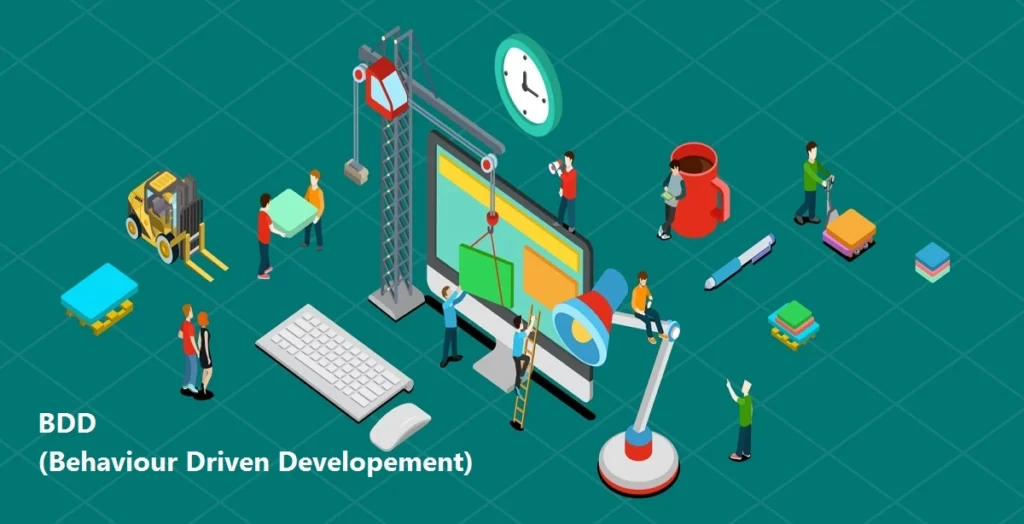Have you ever been on a team where everyone seemed to be working on different pages? It’s not uncommon for teams to struggle with communication, which can lead to delays, misunderstandings, and conflicts. But what if there was a way to improve team collaboration and productivity? Enter Behavior-Driven Development (BDD), a software development approach that emphasizes collaboration and communication between team members. Let us learn more about The role of Behaviour Driven Development in Boosting Team Performance.
Behavior-driven development (BDD) is an Agile approach to software development that focuses on designing an application based on how a user is expected to interact with it. This simply means that the developers are working very closely with the final users to meet their needs and expectations and, moreover, make an ensign that works as per their needs. This results in better communication, increased teamwork, and, ultimately, higher-quality software that truly meets the needs of the user.
BDD is more than just a way to write better software – it’s also a way to build better teams. By fostering a culture of collaboration and continuous improvement, BDD can help teams overcome common challenges such as lack of clarity, slow feedback loops, and resistance to change. By focusing on the user and the desired outcomes, BDD can create a sense of shared purpose and alignment among team members.
In This Article
Overview Of Behaviour-Driven Development
Behavior Driven Development (BDD) is a software development framework that places a strong emphasis on continuous collaboration and communication among team members. This means that everyone, from developers to testers, works together to ensure that the business stakeholders’ requirements are met. Behaviour-Driven Development includes developers and testers in the software development process, which further allow them to ensure that the end product meets the needs of everyone that are involved in the process.
Behavior Driven Testing is built on principles of Test-Driven Development and Domain-Driven Design. This approach emphasizes testing software behavior through user stories and acceptance criteria. In BDD, software behavior is described in a simple language known as Gharkin. This language is easy for all team members to understand, regardless of their technical expertise. By using Gherkin, team members can create acceptance tests that describe software behavior from the end user’s perspective.
The primary goal of BDD is to develop software that meets the needs of both the enterprise and the end users. Collaboration and excellent communication are crucial to the success of BDD. By using this methodology, teams can develop software more quickly, effectively, and with higher quality. Ultimately, BDD helps ensure that everyone involved in the software development process is on the same page and working towards the same goal.
Benefits Of Behaviour-Driven Development
Incorporating Behavior-Driven Development (BDD) into the software development process has many benefits that can positively impact the success of a project. By focusing on the expected behavior of the software, BDD helps ensure that everyone involved in the development process is aligned around the same objectives and priorities.
One of the key benefits of BDD is its potential to increase software quality by using acceptance tests. These tests make sure that the software meets the requirements and expectations of the end users, which can increase customer satisfaction and reduce the chances of errors significantly. BDD also fosters a culture of continuous learning and growth within the team.
By encouraging constant feedback and refinement of requirements, BDD helps teams to identify and rectify issues quite early in the development process, thereby reducing reworks and delays. BDD can also increase team efficiency, effectiveness, and collaboration by providing a shared language and understanding of requirements. This leads to streamlined communication, developmental process, and better documentation. Overall, BDD has a positive impact on the success of a particular project.
Tools For Behaviour- Driven Development
Effective implementation of Behaviour- Driven Development requires the use of the right tools. There are several tools that can help speed up the development process and increase team productivity, such as framework and testing tools.
A must-have testing framework like Cucumber or Behave is essential when it comes to BDD. These frameworks allow teams to create test cases in a language that everyone can understand and automate the testing process. This makes it easy to identify and rectify issues as they arise.
In addition, collaboration tools like Trello and JIRA can be incredibly helpful when working with BDD. They enable teams to manage tasks, monitor progress, and communicate with each other in real-time, ensuring that everyone is working towards achieving project objectives. Finally, code editors like Visual Studio Code and Sublime Text are essential in the world of BDD. They provide developers with a variety of tools like syntax highlighting, code completion, and debugging support.
By using the right tools, teams can improve the efficiency and effectiveness of their BDD implementation, leading to higher-quality software and a more streamlined development process.
Wrapping Up
Behavior- Driven Development emphasizes on quality of the end product as its priority and customer satisfaction as a primary goal. BDD is of grave importance for businesses that want to sustain and progress in the software development market. As the market keeps changing and fluctuating, BDD makes sure that businesses adapt and sustain these changes.
BDD emphasizes the importance of teamwork and collaboration. By bringing together people from different backgrounds, BDD helps create a shared understanding of the software’s behavior, which minimizes confusion and misunderstandings. This collaborative environment encourages everyone to take ownership and responsibility for the project, leading to higher accountability and better outcomes.




